On September 24…
“I am pleading to you as President of the U.S. in the interest of humanity law and order, and because of democracy worldwide, to provide the necessary federal troops within several hours.”
~Woodrow Wilson Mann
Mayor, Little Rock, Arkansas
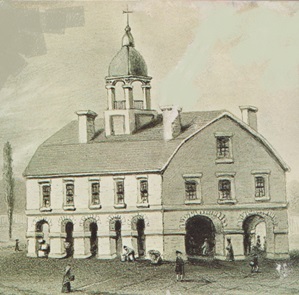
1789 – The Judiciary Act of 1789 was passed by Congress and signed by President George Washington, establishing the Supreme Court of the United States as a tribunal made up of six justices who were to serve on the court until death or retirement.
The first session – with John Jay as Chief Justice – was held in 1790 at the Royal Exchange Building in New York City.
Supreme Factoid: Though the number of justices has been nine for most of its history, this number is set by Congress, not the Constitution. Article III of the United States Constitution did not specify the number of justices. It has been as low as five and as high as ten.
Packing The Court Factoid: President Franklin D. Roosevelt attempted to expand the Court in 1937 by proposing one additional justice for each incumbent who reached the age of 70 years 6 months and refused retirement, up to a maximum bench of 15 justices. At the time, six of the nine justices were already over 70.
The proposal was roundly denounced, going down to defeat in Congress.
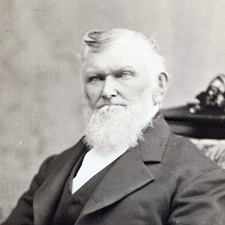
1890 – Faced with the eminent destruction of their church and way of life, Mormon President Wilford Woodruff reluctantly issued the “Mormon Manifesto” in which he commanded all Latter-day Saints to uphold the anti-polygamy laws of the nation.
The Mormon leaders had been given little choice: If they did not abandon polygamy they faced federal confiscation of their sacred temples and the revocation of basic civil rights for all Mormons.
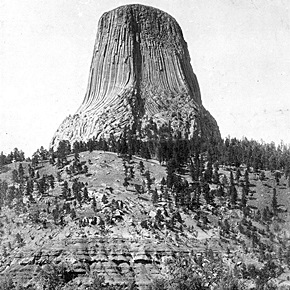
1906 – President Theodore Roosevelt proclaimed Devils Tower in Wyoming as the nation’s first National Monument.
It rises 1,267 feet above the Belle Fourche River, standing 867 feet from summit to base.
Film Factoid: If it looks familiar, there is a good reason. The 1977 movie Close Encounters of the Third Kind used the formation as a plot element and as the location of its climactic scenes.

1934 – It was the end of an era. Babe Ruth played his final home game as a member of the New York Yankees.
Only 2,500 fans were in attendance.

1941 – The Japanese consul in Hawaii was instructed to divide Pearl Harbor into five zones and calculate the number of battleships in each zone and report the findings back to Japan.
Relations between the United States and Japan had been deteriorating quickly since Japan’s occupation of Indo-China and the implicit menacing of the Philippines, an American protectorate.
American retaliation included the seizing of all Japanese assets in the States and the closing of the Panama Canal to Japanese shipping.
In September 1941, Roosevelt issued a statement – drafted by British Prime Minister Winston Churchill – threatening war between the United States and Japan should the Japanese encroach any farther on territory in Southeast Asia or the South Pacific.

1948 – Mildred Gillars, an American broadcaster employed by the Third Reich (Axis Sally) in Nazi Germany to proliferate propaganda during World War II, pleaded not guilty to eight charges of treason.
On March 10, 1949, a jury convicted Gillars on one count of treason. She was sentenced to 10 to 30 years in prison, and a $10,000 fine.
Gillars served her sentence at the Federal Reformatory for Women in Alderson, West Virginia. She was released on June 10, 1961.

1950 – It was “Black Sunday” across the Atlantic seaboard of the United States.
It was the result of the Chinchaga Fire, a forest fire that burned in northern British Columbia and Alberta in the summer and early fall of 1950. With a final size of between 3,500,000 acres and 4,200,000 acres, it was the single largest recorded fire in North American history.
The smoke was on a northeastern path, but hit an atmospheric trough and headed southward towards Ontario and the American eastern seaboard.
Most of the smoke in eastern North America was borne aloft by climatic conditions to high altitudes, although as shown above, Fenway Park in Boston wasn’t spared.
As many observers could not smell it, and the news of the massive fire was sparse, affected people drew other conclusions about its source.
Explanations included nuclear Armageddon, local fires, secret U.S. military experiments, a U.S. atomic blast, supernatural forces, a solar eclipse and of course, an alien invasion.
Three days later, the smoke was observed over Scotland, with reports over England following soon after. France, the Netherlands, Portugal and Denmark also observed the plume.
In early October, a smoke observation was made on the Aleutian Islands, suggesting that the Chinchaga haze had possibly circled the entire globe.

1957 – The Brooklyn Dodgers played their last game at Ebbets Field before moving to Los Angeles the next season.
Only 6,702 fans showed up to watch the Dodgers defeat the Pittsburgh Pirates, 2-0.

1957 – President Dwight Eisenhower issued Executive Order 10730.
Nine black students had entered Little Rock Central High School in Arkansas. When word spread that the students were inside, a crowd of approximately 1,000 gathered outside. There was a concern that the police would not be able to handle the crowd so for the safety of the students they were escorted back out of the school.
Governor Orval Faubus had ordered the Arkansas National Guard to the school because he said he had evidence (although none was shown) that there was “…imminent danger of tumult, riot and breach of peace and the doing of violence to persons and property.”
Woodrow Wilson Mann, the mayor of Little Rock, asked President Eisenhower to send federal troops to enforce integration and protect the nine students.
On September 24, the President ordered the 101st Airborne Division of the United States Army – without its black soldiers, who rejoined the division a month later – to Little Rock and federalized the entire 10,000-member Arkansas National Guard, taking it out of the governor’s control.
The story continues tomorrow.

1957 – RCA Victor released Elvis Presley’s Jailhouse Rock.
The single was #1 on the Billboard Hot 100 chart for seven weeks, and a UK #1 hit for three weeks. The song also spent one week at the top of the U.S. country charts, and reached the #1 position on the R&B chart.
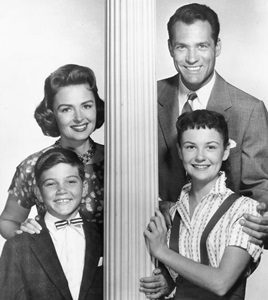
1958 – The Donna Reed Show premiered on ABC.
The program, starring Reed, Carl Betz, Shelley Fabares, and Paul Petersen, ran for eight seasons.

1964 – President Lyndon B. Johnson received the 888-page Warren Commission report on the assassination of President John F. Kennedy in Dallas.
Two months later, the Commission published twenty-six volumes of supporting documents, including the testimony or depositions of 552 witnesses and more than 3,100 exhibits. It contained 19,200 pages.
In its final form, the Commission’s report was amazing in its detail, remarkable in its judicious caution and restraint, yet utterly convincing in its major conclusions.
Ford Factoid: Several months after Gerald Ford’s death in 2006, a cache of declassified documents revealed that Ford, then a U.S. congressman, had approached FBI Assistant Director Cartha DeLoach and offered to confidentially keep the Bureau informed on the Commission’s deliberations.
Among Ford’s many leaks was the revelation that two unnamed members of the Commission – most likely Richard Russell and Hale Boggs – remained unconvinced by FBI evidence that the fatal shot had been fired from the Texas School Book Depository.
Personal Opinion: The Warren Report should have been published as “Fiction”
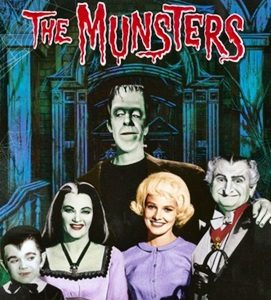
1964 – The Munsters premiered on CBS.
Although ratings were low during its initial two-year run, the program later found a large audience in syndication.
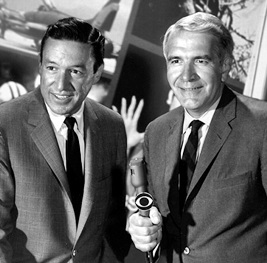
1968 – 60 Minutes premiered on CBS.
Initially, the program aired as a bi-weekly show hosted by Mike Wallace and Harry Reasoner, alternating weeks with other CBS News productions on Tuesday evenings at 10:00 p.m. Eastern Time.
The first edition was described by Reasoner in the opening as a “kind of a magazine for television.” … And it still is.

1968 – The Mod Squad premiered on ABC.
The series starred Michael Cole, Peggy Lipton, Clarence Williams, and Tige Andrews.
It ran for five seasons.

1977 – The Love Boat premiered on ABC. It stayed afloat for nine seasons.
Gopher Factoid: Fred Grandy, who played the role of Gopher on the series, later became a member of the United States House of Representatives from the state of Iowa.
While a student at Phillips Exeter Academy in Exeter, NH, Grandy was the roommate of David Eisenhower, the grandson of President Dwight D. Eisenhower, and was later best man at Eisenhower’s wedding to Julie Nixon, the daughter of then–president-elect Richard Nixon.

1984 – Actor Neil Hamilton (best known for his role as Commissioner Gordon on the Batman television series) died after suffering an asthma attack. He was 85.

2009 – Nirvana released their Nevermind album.
Despite the initial low commercial expectations, the album became an unexpected breakout success and has sold over 30 million copies worldwide, making it one of the best-selling albums of all time.

1991 – Theodor Seuss Geisel, author and cartoonist most widely known for his children’s books, which he wrote and illustrated under the pseudonym of Dr. Seuss, died of cancer at the age of 87.
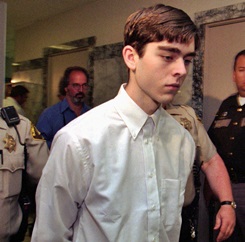
1997 – 15-year old Barry Loukaitis was convicted in a Seattle courtroom of killing his algebra teacher and two fellow students (critically wounding a third) at Frontier Junior High School in Moses Lake, WA the previous February.
Loukaitis pleaded not guilty on grounds of insanity, but prosecutors argued he’d carefully planned his attack, inspired by Pearl Jam’s video for their song Jeremy, in which a troubled teen commits suicide in front of his teacher and class.
Loukaitis was sentenced as an adult to two consecutive life sentences, with an additional 205 years without the possibility of parole at the Clallam Bay Corrections Center.
The U.S. Supreme Court ruled in 2012 that people convicted of murder they committed under 16 years of age could not receive life terms without parole.
Loukaitis was heard for a resentencing in 2017, during which he apologized for the first time, in a letter to the Grant County Superior Court.
He was re-sentenced to 189 years in prison.

2002 – Mike Webster, a Football Hall of Fame center, died of a heart attack at the age of 50. His autopsy is considered one of the most significant moments in the history of sports.
Allegheny Medical coroner’s office pathologist Bennet Omalu confirmed a heart attack was the cause of death, but the autopsy also revealed chronic traumatic encephalopathy, or CTE; the first former NFL player diagnosed with the condition.
Since his death, he has become a symbol for head injuries in the NFL and the ongoing debate over player safety.
Webster played 17 seasons in the NFL – the first 15 with the Pittsburgh Steelers before retiring in 1991. As a Steeler, he won four Super Bowls, played in nine Pro Bowls and 245 NFL games, including 177 in a row.
The years of being butted repeatedly on the head took a brutal toll.
By the time the man known as “Iron Mike” entered the Hall of Fame in July 1997, he had become a recluse, in agony from herniated discs and hand injuries, impoverished and angry at his fate.
He was homeless, unemployed, deep in debt, beset with medical ailments, lacking health insurance, in the midst of divorce, in the care of a psychiatrist and on medication, and involved in a complex lawsuit over real estate investments.
In 1999, Webster was charged with forging 19 prescriptions to obtain Ritalin, a stimulant mainly used for children with attention deficit hyperactivity. He said he was using the drug to treat brain damage caused by repeated head injuries that had led him to behave erratically.
Webster – who was only 45 when the photo above was taken – was never officially treated for a concussion but doctors say he suffered multiple concussions (“without a doubt more than 20”) and those concussions had indeed damaged his frontal lobe, causing cognitive dysfunction, destroying his attention span and concentration.
Steelers’ owner Dan Rooney paid for almost all of the $7,600 funeral, but he refused to believe Webster’s problems were more than psychological or that he was truly entitled to an NFL disability.
“Everybody gets hurt in football,” he said, “but very few players get hurt permanently. He wasn’t eligible, to be honest.”
In 2017, NFL commissioner Roger Goodell – talking about the topic of health and safety in the league said (with a straight face, no less), “The average NFL player lives five years longer than you. So their lifespan is actually longer and healthier. And I think because of all the advancements, including the medical care, that number is going to even increase for them.”
Those two statements, boys and girls, say all you need to know about the NFL – the League of Denial.
On April 26, 2005, a federal judge ruled that the NFL benefits plan owed Webster’s estate $1.18 million in benefits. With the addition of interest and fees, that amount was estimated to exceed $1.60 million.
The NFL appealed the ruling. On December 13, 2006, the U.S. Court of Appeals for the Fourth Circuit in Richmond, Virginia, affirmed the 2005 judgment.

2007 – The Big Bang Theory premiered on CBS.
The series aired a total of 279 episodes over 12 seasons. Although it finished at #68 in its first season, eight of the next eleven seasons saw the show ranked in the top ten of the final television season ratings.
Jim Parsons, in his role as Sheldon Cooper, won four Emmys for Outstanding Lead Actor in a Comedy Series. He was the only member of the ensemble cast to win a Primetime Emmy.
Mayim Bialik was nominated three times for Outstanding Supporting Actress but failed to win. Johnny Galecki (Leonard) was nominated once for Outstanding Lead Actor (losing to Parsons).
None of the other regular cast members ever received an Emmy nomination.

2009 – Susan Atkins, a convicted murderer who was a member of the “Manson family,” died.
The cause of death was announced as natural causes by the California Department of Corrections. A year earlier, Atkins had received a diagnosis of brain cancer and had a leg amputated.
Atkins was convicted for her participation in eight killings, including the most notorious, the “Tate/LaBianca” murders. She was sentenced to death, which was subsequently commuted to life in prison.
Compiled by Ray Lemire ©2019 RayLemire.com / Streamingoldies.com. All Rights Reserved.